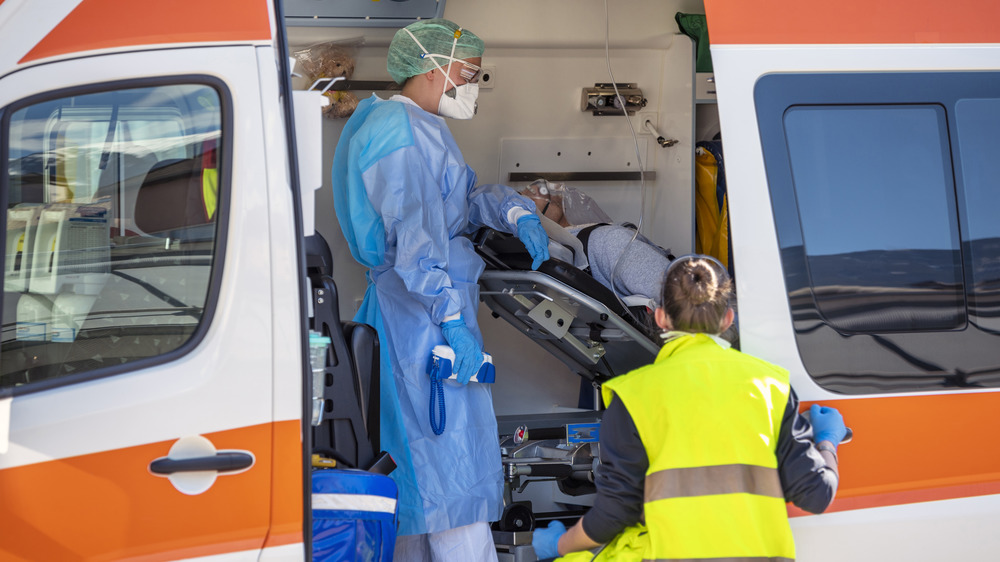Why Oxygen Is In Short Supply In COVID-19 Hot Spots
Large numbers of patients struggling to breathe because of the coronavirus are taxing hospital oxygen supplies in California, Texas, and other parts of the country, as well as the pipes and tubing that deliver this crucial element, officials say (via NBC). The coronavirus, or COVID-19, is a respiratory virus that can cause inflammation in the lungs, pneumonia, or acute respiratory distress syndrome, requiring people to use oxygen or a ventilator to breathe (via WebMD). That's why the U.S. Centers for Disease Control (CDC) recommends wearing masks in public to prevent transmitting droplets when you speak, breathe, sneeze, cough, or sing.
To conserve space, oxygen is "often stored as a liquid around minus 300 degrees Fahrenheit, about as cold as the surface of Neptune." But drawing upon a large amount of liquid oxygen at one time can cause icing in a hospital's distribution system, freezing valves or restricting airflow, health officials said. In Los Angeles County, where the number of cases has skyrocketed — more than 820,000 cases as of Jan. 5 compared to about 300,000 cases on Nov. 2, 2020 — the U.S. Army Corps of Engineers is surveying hospitals for freezing oxygen pipes.
Aside from freezing issues, some oxygen supplies are low
Dr. Loretta Christensen, chief medical officer for the Navajo Area Indian Health Service, noticed similar problems with weak oxygen flow in December as the number of patients needing oxygen increased. A hospital in Gallup, New Mexico, required new filters to boost the oxygen flow, she said. At Tséhootsooí Medical Center in Fort Defiance, Arizona, some patients have remained longer or transferred to other facilities because of a shortage of oxygen cylinders or not having the electricity at home needed to run oxygen equipment, officials said.
Elsewhere, vendors say they have struggled to supply hospitals with portable oxygen cylinders, oxygen concentrators, and nasal tubing. Meanwhile, to manage its oxygen supply, the Los Angeles County Emergency Medical Services Agency on Monday told rescuers to conserve oxygen in the field and not transport people who have little chance of survival (via NPR).
"We are continuing to resuscitate patients in cardiac arrest, and we continue to transport all patients [whom] our paramedics are able to resuscitate in the field," Dr. Nichole Bosson, assistant medical director at the L.A. County Emergency Medical Services Agency, told NPR. However, paramedics and EMTs are transporting patients longer distances because of hospital closures or spending more time waiting to offload them. "And these patients need oxygen. ... And if we cannot get additional tanks and cannot fill the tanks, we risk to run out of oxygen for patients who need it."


